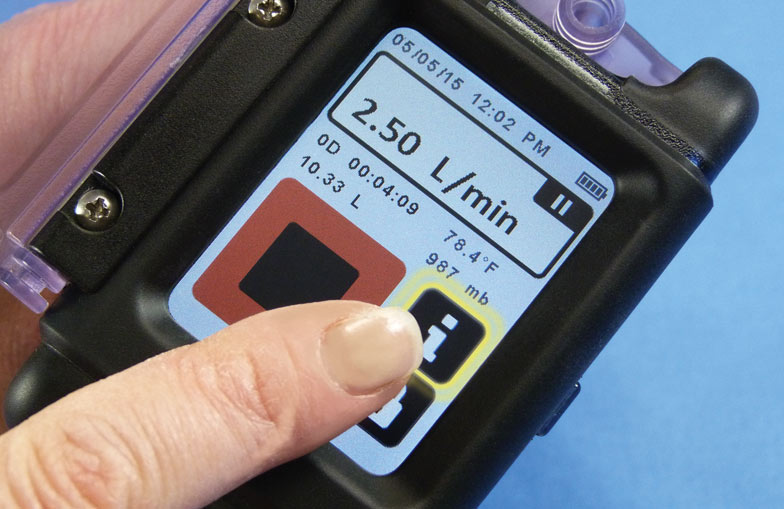What Do You Need to Consider Before You Purchase an Air Sample Pump Instrument?
There are many different types of air sampling pumps available, it’s often difficult to determine which one is best for your operation. It’s important to think about what type of hazard your device is going to be monitoring. Is it for dust, vapour or bioaerosols? This will determine what flow rate you will need. It’s also important to consider whether you will be mainly using your air sampling pump for static or personal use.
Read these recommendations below and use as a guide when making an informed decision on your air sampling pump purchase.

Flow Rate
One of the most important measures to look at when purchasing an air sampling pump is to understand what flow rate you need. The flow rate can range between 20ml up to 30 litres (L) per minute. The majority of dust sampling applications are performed at flow rates between 1 and 5 litres per minute. Whereas most gas samples are performed at low flow rates between 20 and 500ml per minute.
You need to ensure that the air sample pump you choose is suitable for measuring the required flow rate. For example the Airchek XR5000 can be used for dust sampling operating with a flow range of 5 to 5000ml per minute, but because of this flow rate range it can also be used for low flow rates for sampling gas and vapour, simply by adding the low flow adaptor kit.
An even higher flow rate is needed when sampling for natural or artificial particles of biological origin (microbial, plant or animal) which can be found suspended in the air. These bioaerosols, such as mould, need a much higher flow rate to successfully take a sample. The Quick Take 30 can maintain a flow of 10 to 30L per minute, ideal for use with Biostage viable cascade impactors, or spore trap cassettes such as the VersaTrap and microvacuum cassettes.
Battery
There are two things to consider when looking at battery specifications and these are what is the battery made of, and how long it can operate for. You can purchase sample pumps with a Li-ion, Alkaline or NiMH battery. Li-ion batteries have significantly lower self-discharge rate than NIMH and therefore can generally operate for longer. Alkaline batteries are good for low powered devices whereas NiMH are better for higher powered units.
Runtimes for sample pump batteries can vary from a minimum of 10 hours up to approximately 40 hours.
One of the longest battery life units, but still small and lightweight, is the Airchek XR5000. This sampling pump has a run time of up to 40 hours, which means it can be left on site for two days without the need for charging. Consultants who are attending multiple job sites do not need to take heavy charging gear with them, minimising the amount of equipment needed on site.
Static or Personal
You must consider whether the air sample pump will be left in one location or attached to an individual worker. This will determine the ruggedness and durability of the air sample pump needed. If you need to leave the monitor unattended it must be sturdy enough to withstand accidental kicks, drops, or movement of equipment around it which will happen in a normal working environment. You may want to consider the Universal Series, which has been designed for rugged industrial use.
If the air sample pump is being used for personal protection you will need to ensure that it is lightweight, easily attachable and simple for the operator to use. Take a look at the AirChek XR5000 personal air sampling pump which is suitable for low flow gas/vapour or high flow particulate sampling.
Intuitiveness
You should ask yourself the question of how intuitive you need the monitor to be. Air sampling pumps can be touchscreen, Bluetooth enabled, have built-in handsfree calibration capability, or high visibility LED fault lights, plus many more useful and user-friendly features. However, you may not need any of these! You may just need a simple pump which will do the job.
Each pump has different features, if you’re looking for an air sampling pump which is feature rich and highly user intuitive then take a look at the Airchek Touch however, if you are just looking for a simple monitor then you could view the Universal Series known as the ‘classic workhorse’ sample pumps.
Budget
The more features you have in a device, naturally the more you can expect it to cost. However, remember you must also take into consideration the cost of time and resource it may take if your sampling method is a more manual process. Cover the above points first as this should guide you in the right direction of an air sampling pump that’s most suitable for you and your operation.
If you’re still unsure, please just get in touch with us as we have had extensive experience in delivering multi-solution air sampling projects for various applications.